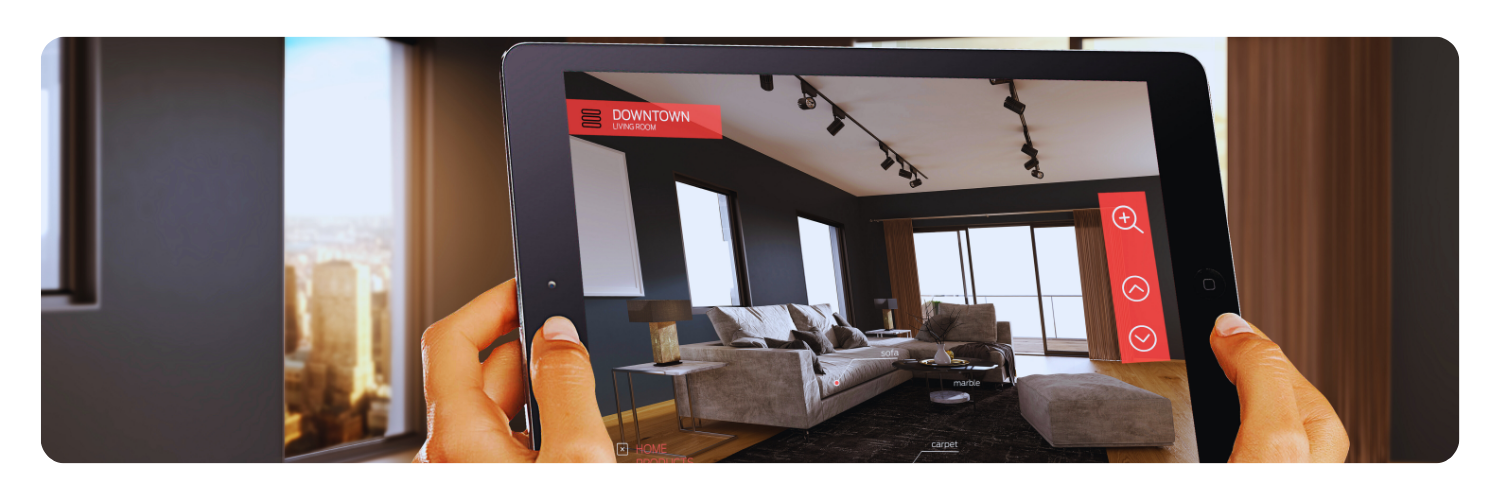Running a furniture ecommerce store comes with its unique set of challenges. With the rise of online shopping, customer expectations have reached new heights, and it’s no longer enough to offer just great products. You must also deliver an exceptional customer experience (CX) from browsing to purchasing and even post-purchase. In an increasingly competitive market, businesses that prioritize CX see not only improved customer satisfaction but also higher sales and customer loyalty. So, how can you elevate your furniture ecommerce experience and stand out? Let’s dive into 12 proven strategies that can transform your business and leave customers feeling delighted with every interaction.
Personalize the Shopping Experience for Higher Engagement
Consumers nowadays expect personalized experience. Just like in a physical store, where a salesperson might suggest products based on your preferences, personalized recommendations on your ecommerce site create a more engaging shopping experience. Personalization can range from recommending products based on past purchases or browsing history to using dynamic content that changes based on the time of day or season. The more you tailor the shopping experience to your customers’ needs and preferences, the more likely they are to spend time on your site and complete their purchase. This not only improves engagement but also increases conversion rates, as customers feel like the products they see are more relevant to them.
By offering personalized experiences, such as showing related furniture sets or highlighting items in their preferred color schemes, you can build stronger relationships with your customers. Personalized recommendations can make them feel understood, leading to higher satisfaction and the potential for repeat business.
The Use Augmented Reality (AR) to Enhance Product Visualizations

For furniture buyers, one of the biggest challenges of shopping online is the uncertainty of whether a piece will look good in their space. Augmented Reality (AR) technology solves this problem by allowing customers to visualize furniture pieces in their own home, before they even click "buy." This interactive tool helps eliminate the doubt that often leads to cart abandonment. AR gives your customers the power to view products from different angles, zoom in on details, and even check how different items fit in their space.
Studies have shown that customers who use AR are more likely to purchase, and they often spend more. In fact, they have been found to have a two-times higher average order value and a three-times higher conversion rate compared to non-AR users. To make it easy for your customers to experience AR, integrate features that allow them to use AR directly from their desktop or mobile device. Providing this level of engagement ensures that your store feels cutting-edge and gives customers the confidence they need to make purchasing decisions.
Make Self-Service Options Easy and Accessible
Customers want answers quickly and at their convenience. Providing self-service options like FAQs, detailed product information, and how-to guides empowers customers to find solutions independently. A well-organized self-service portal can allow customers to check order statuses, process returns, or manage their accounts without the need to contact support. This enhances customer satisfaction by reducing wait times and offering immediate resolutions to common issues.
Investing in easy-to-use self-service options also reduces the workload on your customer support team, allowing them to focus on more complex queries. When customers feel they have control over their experience, they’re more likely to stay loyal and appreciate your brand for its transparency and efficiency. Simple, intuitive user interfaces for self-service options can greatly improve the overall customer journey.
Optimize Your Supply Chain for Faster, Reliable Delivery
Nothing frustrates a customer more than delayed delivery. For ecommerce businesses, managing an efficient supply chain is critical to ensuring that orders arrive quickly and reliably. With furniture, which is often bulky and complex to ship, getting this part of the process right can make a huge difference in customer satisfaction. The faster and more reliably you can fulfill orders, the happier your customers will be.
You can achieve this by streamlining inventory management and logistics. Ensure that your stock levels are consistently accurate and that you have clear communication about delivery expectations. Providing customers with real-time tracking and proactive updates on their orders builds trust and reassures them that they’re in good hands. A well-optimized supply chain doesn't just ensure timely deliveries; it also helps you avoid mistakes like sending the wrong product or damaging an item in transit, both of which can lead to costly returns and lost customer loyalty.
Provide Top-Tier Customer Support Across Channels
Whether customers are seeking advice on product choices or need help resolving an issue after a purchase, excellent customer support is crucial. Many consumers today expect 24/7 availability, and offering multiple contact channels—such as chat, email, and phone support—ensures that they can get in touch through their preferred method. Quick and efficient customer service can turn a frustrating experience into a positive one, and great support can transform first-time buyers into repeat customers.
Your support team should not only have product knowledge but also empathy and patience. A well-trained team that responds quickly to inquiries, resolves issues, and provides personalized solutions is essential. Continuously training your customer support team ensures they stay up to date with the latest product details and customer service best practices, helping to maintain high standards of service and enhance overall customer experience.Create a Seamless Omnichannel Shopping Experience
Modern shoppers are omnichannel, meaning they interact with brands through multiple touchpoints—social media, email, in-store visits, and more. To keep up with these expectations, you need to provide a consistent and seamless experience across all channels. Whether a customer is browsing your website on their desktop, checking your social media on their phone, or visiting a physical store, the experience should feel cohesive.
By integrating your online and offline channels, you allow your customers to move smoothly through their buying journey. For example, they might choose products online and pick them up in-store or inquire about products through social media and then make a purchase on your website. Providing multiple touchpoints for customers to interact with your brand ensures you meet them where they are, making the experience more convenient and user-friendly.
Leverage Data to Fine-Tune Your Customer Experience
Data is one of your most valuable assets in understanding your customers’ needs and preferences. Analyzing data from your website, social media, and customer behavior allows you to make informed decisions that directly improve the customer experience. For instance, understanding which products are most popular or which pages have the highest bounce rates can guide decisions on inventory, pricing, and content strategy.
Customer data should not just be used to improve marketing strategies but also to personalize the customer journey. When you know your customers’ preferences, you can recommend products they’re more likely to love, optimize their browsing experience, and tailor offers to meet their needs. By using data effectively, you can ensure that your ecommerce store evolves alongside customer expectations, continuously enhancing the overall experience.
Actively Seek and Use Customer Feedback

One of the most effective ways to improve customer experience is by asking customers for feedback. Whether it’s through surveys, reviews, or simply engaging with them on social media, feedback provides direct insights into what’s working and what’s not. Make it easy for customers to share their thoughts, and ensure you act on that feedback to improve your service.
Customer feedback helps you identify areas of weakness, such as difficult-to-navigate website pages or frustrating return policies. It also highlights areas where you’re excelling. By demonstrating that you value customer feedback and are willing to make changes, you foster loyalty and create a stronger connection with your audience.
Run A/B Tests to Improve Your Website’s Performance
A/B testing is an essential tool for optimizing your online presence. By testing different variations of your website—whether it’s the design, copy, or call-to-action buttons—you can gather data on what works best for your customers. Testing various elements on your product pages, such as different images, descriptions, and pricing options, allows you to fine-tune your site to maximize conversions.
Running A/B tests on your ecommerce site helps you avoid guesswork and make data-driven decisions. By continually testing and refining your website, you ensure that your online store provides the best possible experience for your customers, resulting in higher conversion rates and better engagement.
Boost Product Visualization with 3D Models
Customers need to see exactly what they’re buying before committing to a purchase, and 3D product visualization is the perfect tool to help them do that. Allowing customers to interact with 3D models of furniture, turning them around and zooming in for more detail, gives them a sense of control and confidence in their purchasing decisions. 3D visualization enhances the shopping experience by making it more interactive and engaging.
With this technology, customers can view products from every angle and even see how different fabrics, colors, or finishes look. This immersive experience not only boosts customer satisfaction but also leads to higher conversion rates, as customers are more likely to make a purchase when they feel fully informed about what they are buying.
Tap into Impulse Purchases with Smart Upselling
Impulse purchases are an important aspect of increasing your average order value. By offering smart upsells—relevant add-ons, accessories, or complementary products—you can encourage customers to buy more without being pushy. For example, if a customer is buying a sofa, offering them a matching coffee table or cushions could help boost the sale.
The key is to offer upsell options that make sense for the customer and enhance their shopping experience. When done correctly, upselling not only increases your revenue but also improves customer satisfaction by providing them with products they might not have considered otherwise.
Offer Flexible Payment Options
A flexible payment system can be a game-changer for furniture ecommerce. Since furniture purchases can be a significant investment, offering multiple payment methods—including installment plans—helps reduce friction and encourages customers to complete their purchases. Partnering with financing services that allow customers to “buy now, pay later” can also make large purchases more accessible.
By accommodating different payment preferences, you cater to a wider audience and make your store more inclusive. Additionally, transparent pricing and no hidden fees build trust with your customers, ensuring they have a smooth and satisfying payment experience.
Closing Insights
Creating a stellar customer experience for your furniture ecommerce business isn’t just a nice-to-have—it’s a necessity. By implementing these 12 strategies, you can set your brand apart, build stronger customer relationships, and see measurable improvements in your sales and satisfaction metrics. Whether it’s through personalization, AR technology, or faster delivery, each of these tactics helps create a seamless and enjoyable shopping journey that keeps customers coming back.




